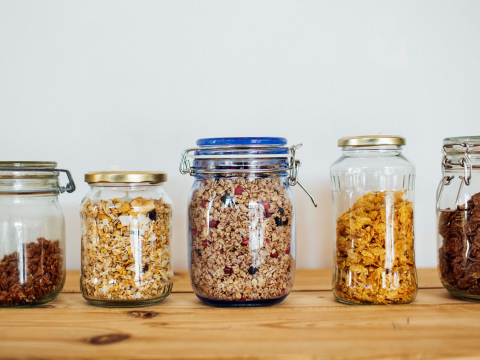By DANNY KWON JD …Lately, you’ve probably been hearing a lot about the gut microbiome and how it needs to be healthy for our bodies to operate at optimum. How do guts get unhealthy, or healthy, in the first place? When we talk about the “health” of the gut, we’re talking about the good and bad bacteria and organisms living in the microbiome of the gut.
The food we eat daily contributes to this microbiome and feeds the good and bad bacteria. The key ingredient to create a healthy gut is fiber. With plenty of fiber, good bacteria abounds. Without it, unhealthy bacteria takes over, contributing to ill health. In our processed food society, our meals are designed to be as tasty as possible which means not too much fiber is found in most processed foods or restaurant food. Instead, processed foods fill our gut with unnecessary fillers, chemicals and preservatives, things unhealthy bacteria in our gut love to feed on. As a result, our guts are often unhealthy environments.
“The lack of fiber intake in the industrialized world is starving our gut microbes, with important health consequences that may be associated with increases in colorectal cancer, autoimmune diseases, and decreased vaccine efficacy and response to cancer immunotherapy,” says Katrine Whiteson, associate professor of molecular biology and biochemistry who co-directed a recent University of California Irvine (UCI) Microbiome research study that was recently published in the American Society for Microbiology.
Dietary fiber consists of resistant carbs found in fruits, vegetables and whole grains which are not digestible by our bodies. This slows overall digestion of our meals and makes us feel fuller longer. So, it’s also important for regulating our feeling of hunger (which means we snack and binge eat less). While indigestible, the bacteria in the gut metabolizes fiber into short-chain fatty acids and other byproducts which are important to our health.
But in an industrialized country, the average person consumes less than half of the recommended daily fiber (50 grams per day) mainly because of decreased consumption of plant-based foods. Processed foods and restaurant foods tend to have low levels of fiber. And reduced fiber in one’s diet is associated with diseases like diabetes type II, colon cancer and autoimmune diseases.
The good news is that the study found that even a short period of eating a high fiber diet restored the gut to a healthy state. The UCI researchers took undergraduate students and gave them 10 high fiber unprocessed meals each week for two weeks. They took gut samples before and after to track the microbial composition changes. The students also recorded their daily dietary intake information of macronutrients they consumed to reach 50 grams of dietary fiber per day during those two weeks.
One of the instructors marveled at how she and the students enjoyed learning which foods are high in fiber. “We were amazed to find how high in fiber berries and avocados are and exchanged ideas for how to prepare beans and lentils,” one researcher said.
After two weeks, the researchers compared overall bacterial composition using tools like DNA sequencing and gas chromatography and found that the gut experienced major changes after eating the high fiber diet. Researchers found that just two weeks of eating a high fiber diet caused “significant” gut biome changes such as an increase in the presence of Bifidobacterium, a common fiber-degrader.
So, put yourself on a two-week challenge to increase your daily fiber intake! Remember that the goal is 50 grams. But you’re not going to get there by just resolving to eat more fiber. Do the research and develop a plan to consume 50 grams every day. Common fruits like apples, oranges and bananas have about 3-4 grams of fiber. Two cups of green leafy veggies typically have 5 grams. Some vegetables like artichokes have a whopping 10 grams so do the research and eat accordingly. When snacking, snack on foods like seeds which are high in fiber as opposed to chips which are not. A serving of popcorn has 4 grams of fiber. Do the research. With careful planning, right choices, and a meal plan, you can get to 50 grams per day.
If you keep at it, not only will you restore your gut microbiome to a healthier state, you’ll reap the benefits of a healthier gut with better insulin resistance, better mental health, better skin, and better sleep.
–Danny Kwon JD is the executive director of Life and Health and CEO of Carbon Biotech, the makers of black ice charcoal patch and is an attorney licensed in California and Canada.
*This article was original published on the Life and Health website. https://lifeandhealth.org/slider/short-term-high-fiber-diet-restores-gut-microbiome/1019941.html



